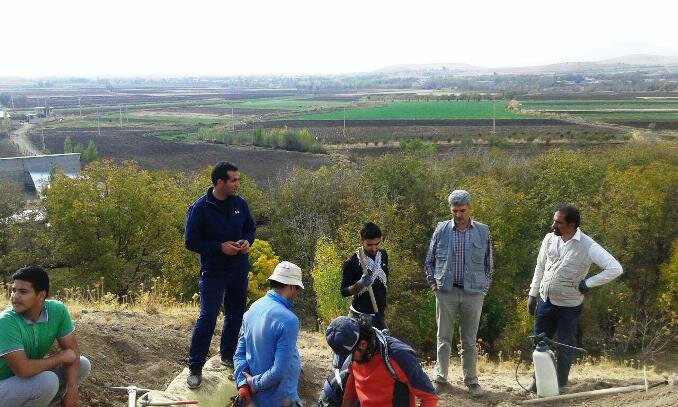INSUBCONTINENT EXCLUSIVE:
TEHRAN-- Tepe Gariran in western Iran was surveyed in 1931 by renowned British archaeologist Sir Marc Aurel Stein (1862-- 1943), together
with a number of other sites all over the ancient continent.His discoveries and views were revealed in a book entitled Old Routes of
Western Iran: Narratives of an Archaeological Journey which was released in November 1969
Located in the county of Alashtar, this popular valley plain becomes part of the main Zagros mountain range.The mount, however, after over
80 years in 2017, dragged the attention of new generations of archeologists to resume excavations at the website, which is most notable for
being home to a Bronze-Age civilization.Iranian Indo-Europeans, including the Medes, settled in Lorestan around that time in 1,000 BC
Between around 700 and 625 BC, the Cimmerians and Scythians at the same time ruled the area.According to an essay talked about throughout an
International Conference of the Society of Iranian Archaeology, excavations of Gariran, as a great Bronze Age website, which covers more
than five hectares, revealed continuity from middle-late Chalcolithic to Iron Age.The identification of settlement patterns can offer
crucial information about regional and cross-regional communications in this area.Due to its remarkable position and the importance of its
websites, this plain has actually been the subject of the growing attention of ancient geographers and geologists.In the Parthian and
Sassanid texts, there has been no referral to the city and plains of Alashtar, however the historians from the early centuries to the
contemporary Islamic era have mentioned the name Alashtar in their books.From an archeological viewpoint, in 1936, Sir Aurel Stein entered
Alashtar to study the settlement websites and the cemeteries presenting Lorestan bronze, which lay across the Karkheh and Seymareh River
He then began examining Gariran and Betki Hills.Ernst Herzfeld was likewise among the scientists who investigated the bronzes in Lorestan
and checked out the relics and artifacts in the Alashtar Plain (Herzfeld, 1941)
In his research studies from 1963 to 1967, Clare Goff visited some parts of Alashtar as well.In total, 72 archaeological sites were
discovered in the Alashtar plain, 42 of which were from the Parthian age, offered the dispersion of artifacts in the area (consisting of
pottery and surface material)
Alashtar is a fertile plain with excellent potential for farming
Although the majority of these sites have been destroyed today due to agricultural activities, the Parthian duration (compared to other
eras) played a considerable role in the development of settlements on this plain
The majority of the Parthian sites in this plain were situated inside these fertile agricultural lands.The surrounding mountains are covered
in forest trees and wild plants, and there is a variety of flora and fauna on the plain.Due to the beneficial weather and environmental
conditions, a variety of crops and trees can now be found in the location as an outcome of the fertile nature of this plain that has
actually encouraged the growing of crops and vegetation.The area is abundant in sycamore, cherry, cranberry, walnut, apple, grape, willow,
poplar, pear, and other trees
In addition to forest trees, non-edible plants like salsify, artichokes, oregano, and mint along with a range of medical and aromatic plants
like borage, daphnia, thyme, basil flowers, violet, damask increased, rose, polyp, musk willow, tulips, licorice, lily, hibiscus flowers,
narcissus, and mountain tea grow.The obvious conclusion from this is that because the Iron Age, the environment and environment of Lorestan
have not basically changed.AFM

